Oculoplastics & Lacrimal Surgery
Our highly trained oculoplastic surgeons specialise in minimally invasive techniques to reduce visible scaring and decrease healing time in the peri-ocular and facial area.
Our oculoplastics specialists have international training in both ophthalmology and facial plastic surgery, and offer treatment in all areas of eyelid, lacrimal and orbital pathology.
Ectropion (turning out of the eyelid)
What is an ectropion?
Ectropion is the most common lower eyelid malposition. It is often an ageing change resulting in eyelid laxity allowing the lid to sag away from the eye. Mild cases may not visibly turn away from the eye but can cause tearing, irritation, and/or dryness of the cornea. More severe cases will result in the eyelid truly turned away from the eye.
Symptoms may include excessive tearing, chronic irritation, redness, pain, a gritty feeling, crusting of the eyelid, mucous discharge, and in extreme cases breakdown of the cornea.
What causes Ectropion?
Ectropion most commonly results from ageing changes causing tissues to stretch and the eyelid to loosen. However, it may also occur from facial weakness (from Bell’s palsy, stroke, or other neurologic conditions), trauma, skin scarring, previous surgeries, or eyelid tumours.
What is the teatment for Ectropion?
Ectropion repair is tailored to the underlying cause of the malposition. As an oculoplastic specialist, Dr Hersh will determine the root cause of you eyelid malposition and perform the appropriate corrective procedure.
Most commonly, the eyelid is tightened at the outside corner of the eye and may include tightening of the lax retractor muscles to restore and stabilise the eyelid to its normal position.
The surgery is performed as a day procedure and often results in rapid resolution of the eyelid malposition. Bruising can be expected for up to 2 weeks. In the vast majority of cases, after the eyelid has healed the small scar from this minimally invasive procedure should barely be noticeable. The eye will feel comfortable and should be protected from exposure and corneal scarring, as the eyelid will be retuned to its anatomical position.
Entropion (turning in of the eyelid)
What is an Entropion?
Entropion is the term used to describe rolling inward of the eyelid. Once turned in, the eyelid and eyelashes rub against the eye, usually causing significant irritation, redness, and sensitivity to light and wind. If left untreated, chronic entropion can cause corneal scarring and loss of vision. If entropion exists, it is important to have it fixed before permanent damage to the eye occurs.
What causes Entropion?
Like ectropion, the most common cause of entropion are laxity and ageing changes. However, trauma, scarring, inflammatory conditions and eyelid tumours can also result in entropion.
What is the treatment for Entropion?
Entropion should be repaired surgically before the rubbing damages the cornea by causing infection or scarring. Dr Hersh will determine the root cause of you eyelid malposition and perform the appropriate corrective procedure.
Temporary measures including taping the lower lid to mechanically evert the lid and Botox therapy to weaken the orbicularis muscle may be used prior to definitive surgical repair, or in patients who are not well enough for surgery.
Definitive treatment of entropion requires surgical repair. Most commonly, the eyelid is tightened at the outside corner of the eye and the retractor muscles are tightened to restore and stabilise the eyelid to its normal position. Approaching both anatomical components significantly improves surgical success and reduces recurrence.
The surgery is performed as a day procedure and often results in rapid resolution of the eyelid malposition. Bruising can be expected for up to 2 weeks. In the vast majority of cases, after the eyelid has healed the small scar from this minimally invasive procedure should barely be noticeable. The eye will feel comfortable and should be protected from further irritation and rubbing as the eyelid will be returned to its anatomical position.
Ptosis (droopy eyelid)
What is Ptosis?
Ptosis (pronounced “toe-sis”) is the medical term for an abnormally low or droopy upper eyelid. It is different from dermatochalasis, which is the medical term for excess skin of the upper eyelid, although both are often present in the older population.
Patients often raise their eyebrows or adopt a “chin up” head position in an effort to increase their field of vision. In advanced cases, people need to lift their eyelids with their fingers to see, particularly at the end of the day. Patient often complain of heavy lids and a restriction of vision or headache due to the low upper lids blocking their field of view.
What Causes Ptosis?
The most common cause of ptosis is age related weakening or stretching of the major muscle that lifts the eyelid, the levator muscle.
It is important to be evaluated for the rare causes of ptosis including certain neurologic diseases (myasthenia gravis, cranial nerve palsy, myopathy), trauma, or congenital weakness. Ptosis may become more apparent following refractive or cataract surgery.
Dr Hersh has extensive experience in identifying the underlying cause of ptosis and advising appropriate treatment.
What is the treatment of Ptosis?
Most cases of ptosis can be corrected surgically, usually by tightening the levator muscle. Occasionally, severe cases with poor eyelid muscle function other techniques such as frontalis suspension may be required.
Dr Hersh performs both scarless/posterior ptosis and anterior approach ptosis repair. In posterior repair, access is gained through the underside of the lid and avoids any skin incision. In anterior approach repair a thin incision in created in the natural skin crease and the thin scar is usually barely noticeable once the lid has fully healed.
The surgery is performed as a day procedure with local anaesthetic and sedation. Bruising can be expected for unto 2-4 weeks.
The goal is to raise the eyelid to allow for improved visual field and to increase symmetry with the opposite upper eyelid. It is helpful to expect an improvement in appearance and symptoms rather than a complete change in appearance. Dr Hersh aims to provide a refreshed natural look that is not overdone.
Blepharoplasty (surgery for dermatochalasis)
What is Dermatochalasis?
Dermatochalasis is the medical term for excess skin of the upper eyelid. The excess skin can, at times, hang over the eyelid margin and thereby block the pupil. Patients often raise their eyebrows in an effort to raise the drooping excess skin. In severe cases, people may need to lift their eyelids with their fingers to see. While surgery to correct mild cases of dermatochalasis is considered cosmetic, cases where a patients visual field is restricted or when the excess skin is resting on the eyelashes is considered to be non-cosmetic by MBS criteria.
What Causes Dermatochalasis?
The most common cause of dermatochalasis is age related weakening or stretching of the skin and deeper tissue overlying the upper eyelid. Weekend tissue and attachment may also cause bludges due to fat prolapse.
Treatment of Dermatochalasis
Dermatochalasis can be corrected by blepharoplasty surgery, which predominately involves the removal of excess skin. Removal and/or sculpting of underlying bulging fat is often performed to achieve the best aesthetic outcomes, resulting in a more youthful appearance. A thin incision in created in the natural skin crease and the thin scar is usually barely noticeable once the lid has fully healed.
The surgery is performed as a day procedure with local anaesthetic and sedation. Bruising can be expected for unto 2-4 weeks.
The goal is to remove the excess skin to allow for improved visual field and reduced heaviness, It is helpful to expect an improvement in appearance and symptoms rather than a complete change in appearance. Dr Hersh aims to provide a refreshed natural look that is not overdone.
Periocular Tumours
More new cases of skin cancer are diagnosed every year than the combined cases of breast, prostate, lung and colon cancer. The eyelid skin is the thinnest in the body and is often exposed to sunlight. As a result, it is often one of the first areas to show sign of aging and sun damage. Unfortunately sun damage, combined with genetics, can lead to skin cancers of the eyelids, including at the lid margin.
Skin cancer of the eyelids is relatively common and several types exist. They rarely cause symptoms such as pain, itching or bleeding, so any unusual nodule or lesion that is growing should be evaluated. Bleeding and/or ulceration (skin breakdown) are strong indications of possible cancer.
Basal Cell Carcinoma
Basal cell tumours (BCC) are the most common eyelid tumour. These skin cancers grow slowly over months to years, so often go unnoticed by patients. BCCs often grow as pearly nodules, potentially with a central depression. If left untreated, they can grow and infiltrate the surrounding tissue, eventually destroying it. BCCs can invade the orbit and travel down the nerves requiring extensive excision and reconstruction if not managed early. Typically they do not spread to distant areas throughout the body. BCCs are successfully treated by full excision, followed by reconstruction of the defect created by the tumour removal.
Squamous Cell Carcinoma, Sebaceous Gland Carcinoma and Melanoma
These types of tumours are much less common than Basal cell tumours, but are more aggressive and require more involved care to ensure complete treatment. In addition to surgical removal, further testing may be needed to ensure the tumour has not spread anywhere else. This will be determined based on your examination and the biopsy results.
Treatment of Periocular Tumours
Treatment of periocular tumours consists of two components. First; complete excision of the lesion and Second; reconstruction of the resultant defect post excision. The reconstruction requires specialised oculoplastic techniques that address aesthetic as well as functional results, in order to re-establish the eyelid for it’s primary role of lubricating and protecting the eye.
Eyelid tumours often extend beyond the visible margins and their treatment requires excision, which on many occasions involve removal of full-thickness sections of the eyelid or vital adjacent tissues to ensure complete clearance of the tumour.
Small defects can be directly sutured closed, even if they extend through the full thickness of the eyelid. Larger defects may require complex reconstructions, involving transfer of adjacent tissues (“flaps”) or skin grafts from other parts of the face, eyelids or other suitable skin.
As a qualified oculoplastic surgeon Dr Hersh has extensive training and experience in lid reconstruction following tumour removal, trauma or scarring from previous surgeries.
Epiphora (excessive tearing)
What is Epiphora?
Excessive tearing or epiphora can cause blurred vision, skin irritation, and significant frustration for some patients. Blockages of the tear drainage ducts can result in excessive tearing, mucous discharge, irritation, swelling, pain, and infection.
What causes Epiphora?
Excess tearing can be caused by blockage of the tear drainage system (nasolacrimal duct), eyelid malposition, or rarely excess tear production. The most common blockage is within the nasolacrimal duct, which normally drains tears into the nose.
There are a variety of causes for blockage of the nasolacrimal duct. The most common is aging changes, although infection, inflammatory disorders, medications, and very rarely tumours.
Treatment of Epiphora
It is important to determine the cause of the excess tearing by clinical examination and evaluation of the patency of the lacrimal system.
If the lacrimal passage is obstructed, the definitive treatment is dacrocystorhinostomy (DCR) surgery. DCR surgery bypasses the blocked duct by creating a new passageway from the lacrimal sac to the nasal space above the blockage. In complete nasolacrimal blockage DCR surgery has a 90% success rate in significantly reducing or completely resolving epiphora.
DCR surgery can be performed via two techniques endonasal DCR or external DCR. Endonasal DCR is a minimally invasive procedure where access to the lacrimal sac is achieved via the nose using a camera or endoscope. Advantages include no scarring on the face and often a quicker recovery. Dr Hersh has extensive experience in endonasal DCR surgery and this is his preferred technique.
External DCR may be indicated if the nasal space is too narrow for successful Endonasal DCR or if a biopsy of the lacrimal sac is indicated.
Alternatives to DCR have been trailed in various parts of the world with limited success. These include balloon stenting, tube insertion without creation of a new tract and small osteum laser DCR. None of these treatments approach the success rates of DCR, and therefore are not undertaken by Dr Hersh. A DCR operation takes about an hour and is usually performed under a general anaesthetic where you are asleep. Typically this is performed as a day surgery procedure; however there may be the option to be admitted overnight.
To find out if oculoplastic surgery is suitable for you, please call our rooms or make an online enquiry.
MIRANDA
Suite 1
20-24 Gibbs Street
Miranda NSW 2228
02 9525 5190
Fax: 02 9525 0202
Directions and parking
BONDI JUNCTION
Park Place
Suite 606b, Level 6
3 Waverley Street
Bondi Junction NSW 2022
02 9387 4427
Fax: 02 9388 0139
Directions and parking
HURSTVILLE
Suite 12, Level 2
33 MacMahon Street
Hurstville NSW 2220
02 9579 4004
Fax: 02 9570 1377
Directions and parking
HOURS
Monday to Friday
8:30am until 5:00pm
FOR PATIENTS
FOR REFERRERS
© 2017- SYDNEY EYE SURGEONS














